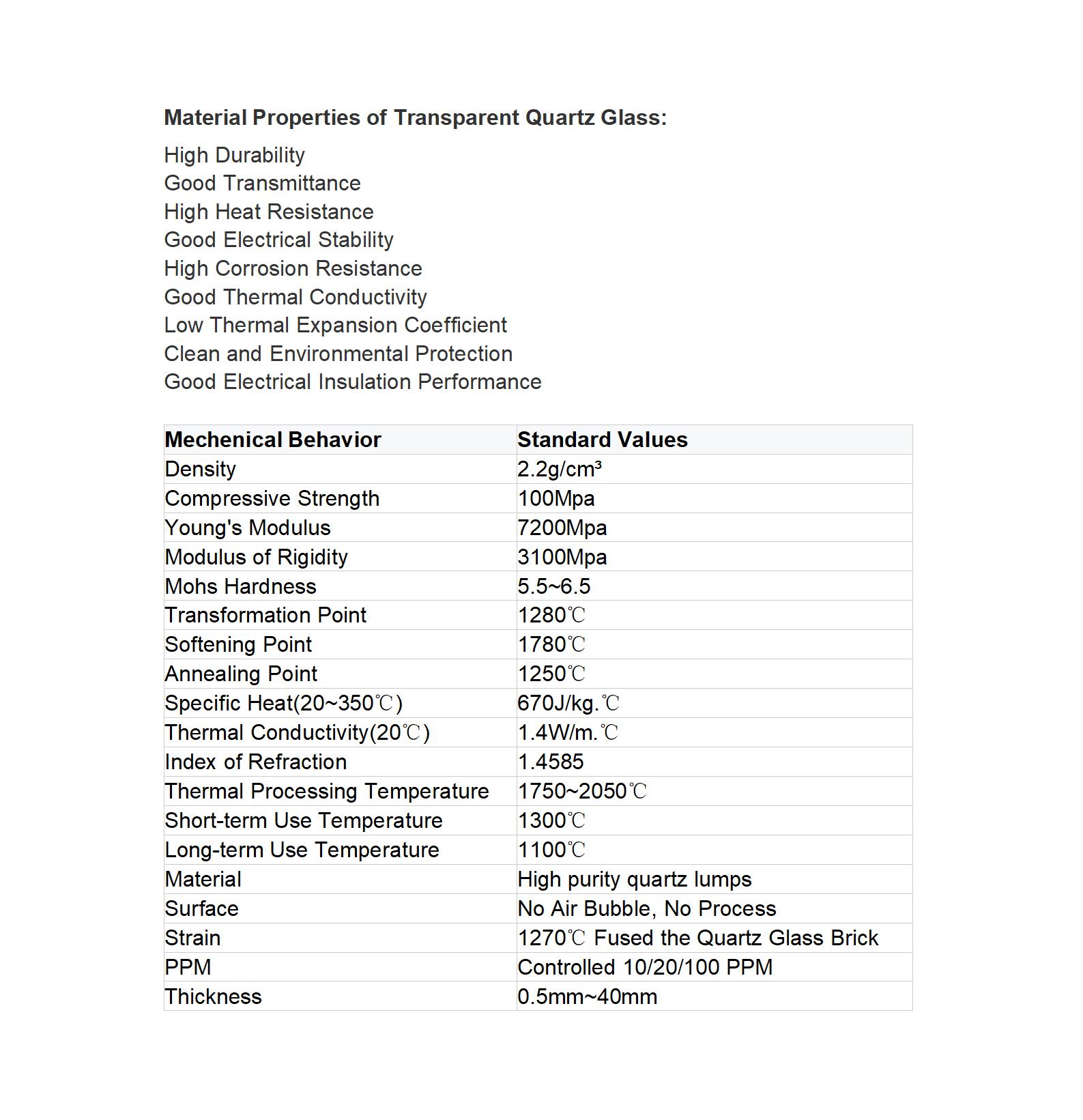T: +86-518-85528012
E: nick@luverrequartz.com
E: nick@luverrequartz.com
1st floor Runlian industrial center No. 116 QuFeng Rd., Haizhou Economic and technological development zone Lianyungang City, Jiangsu Province, China 222062
High transmittance reactor observation window quartz glass plate
High transmittance reactor observation window quartz glass plate is a special glass material designed specifically for chemical reactors
LUVERRE quartz
99.99%
Inner with Vacuum PVC bag and then wrapped with air bubble film, outer with wooden box.
as per customer's requirement
| Availability: | |
|---|---|
High transmittance reactor observation window quartz glass plate
High transmittance reactor observation window quartz glass plate is a special glass material designed specifically for chemical reactors, mainly used in high-temperature and high-pressure reactors and other experimental equipment to achieve visual observation of the reaction process.

The characteristics of this quartz glass plate include:
High temperature resistance: Quartz glass has extremely high heat resistance, with a softening point of around 1700 ° C, so it can be used in high temperature environments without deformation.
Chemical corrosion resistance: Quartz glass has excellent chemical stability and can withstand the corrosion of most acids, bases, salts, and organic solvents, especially under high temperature conditions, exhibiting excellent corrosion resistance.
High transmittance: Quartz glass has extremely high transmittance in the ultraviolet to visible and infrared light ranges, thus providing a good observation field.
These characteristics make quartz glass plates the core component for visualizing reactions in high-temperature and high-pressure reactors. The windows installed in stirred reactors and pressure vessels are usually installed in pairs, one for light transmission and the other for observation. The standard material for these windows is quartz, and for small diameter windows, sapphire material is sometimes used. In addition, quartz glass plates are widely used in experimental equipment such as sample supports, containers, and reactors in laboratories to ensure the accuracy and reliability of experiments.

The high transmittance reactor observation window quartz glass plate plays an important role in scientific research and industrial production due to its excellent performance and wide applications.
High transmittance reactor observation window quartz glass plate
High transmittance reactor observation window quartz glass plate is a special glass material designed specifically for chemical reactors, mainly used in high-temperature and high-pressure reactors and other experimental equipment to achieve visual observation of the reaction process.

The characteristics of this quartz glass plate include:
High temperature resistance: Quartz glass has extremely high heat resistance, with a softening point of around 1700 ° C, so it can be used in high temperature environments without deformation.
Chemical corrosion resistance: Quartz glass has excellent chemical stability and can withstand the corrosion of most acids, bases, salts, and organic solvents, especially under high temperature conditions, exhibiting excellent corrosion resistance.
High transmittance: Quartz glass has extremely high transmittance in the ultraviolet to visible and infrared light ranges, thus providing a good observation field.
These characteristics make quartz glass plates the core component for visualizing reactions in high-temperature and high-pressure reactors. The windows installed in stirred reactors and pressure vessels are usually installed in pairs, one for light transmission and the other for observation. The standard material for these windows is quartz, and for small diameter windows, sapphire material is sometimes used. In addition, quartz glass plates are widely used in experimental equipment such as sample supports, containers, and reactors in laboratories to ensure the accuracy and reliability of experiments.

The high transmittance reactor observation window quartz glass plate plays an important role in scientific research and industrial production due to its excellent performance and wide applications.